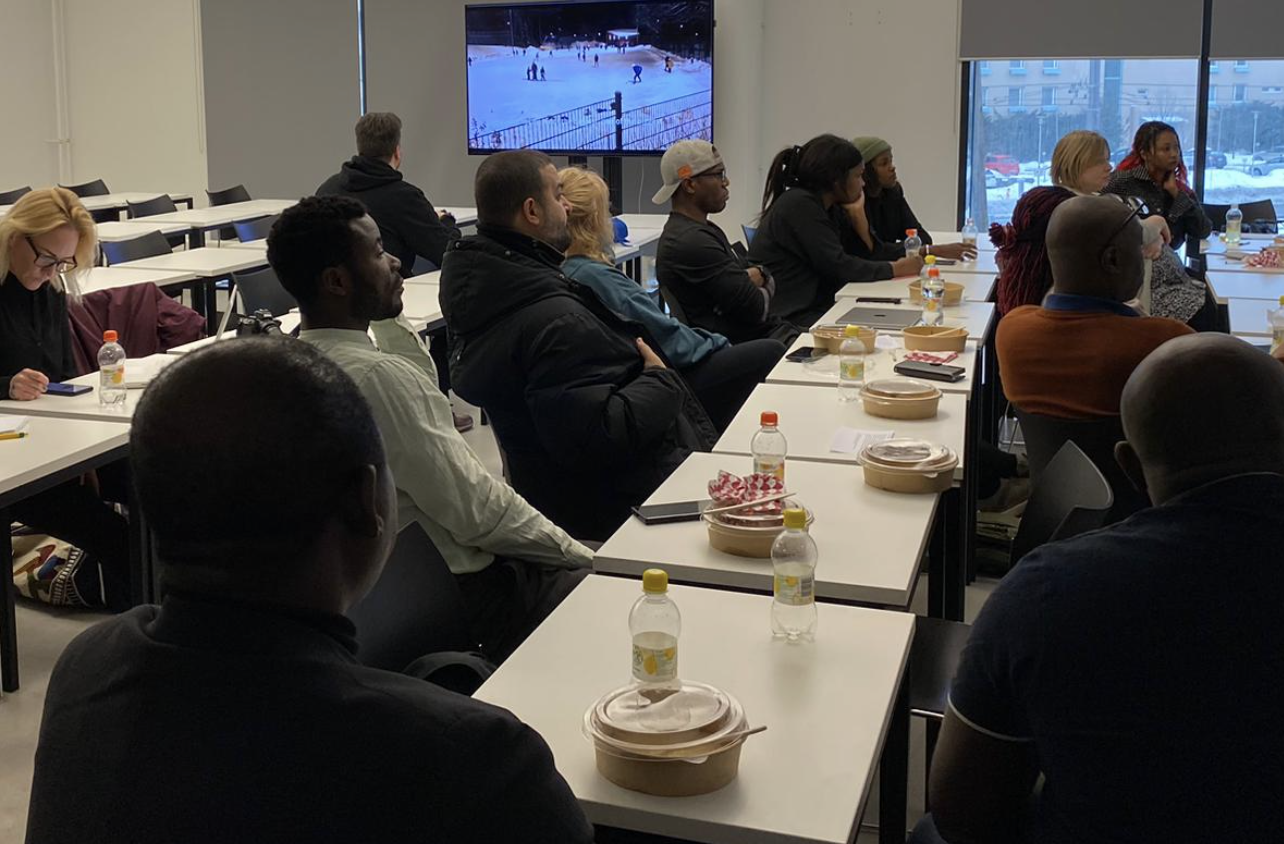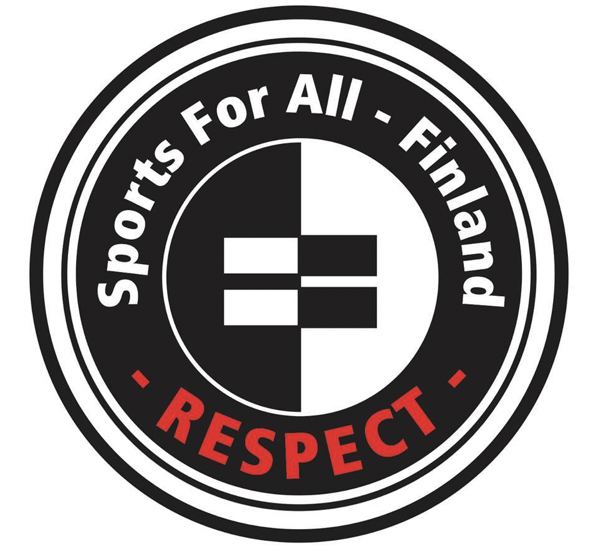Monitora - Monitoring racism in sports

The Monitora project intends to strengthen the professional skills and competencies of CSO's, grassroots sports associations and national and local institutions, in order to enable them monitoring, documenting and reporting discrimination and racism in grassroots sport in 4 EU countries, thanks to common transnational cooperation activities of research, training and networking.
OBJECTIVES:
To collect, analyze and share the methodologies adopted at local and national level to structuring a monitoring system of discrimination and racism in sport.
To develop, test and disseminate a training module to enhance the professional monitoring and reporting skills of CSO's operators, sports operators and institutional representatives.
To strengthen networking at local, national and international level to design a monitoring protocol proposal.
Training package for local grassroots sport club managers and educators:
Why you should take this training
The main aim of this training tool is to provide a practical learning experience that will support local grassroots sports club managers and educators in monitoring and reporting racism and discrimination incidents.
What are you going to learn
By the end of the training you are going to:
Be aware of the need to monitor racism and discrimination in grassroots sport (AWARENESS)
Be equipped to monitor and report incidents (ACTION-TAKING)
Be encouraged to network and collaborate on the issue (COLLABORATING)
Find out more about our European partners and the aims of the project here:
1. Introduction
Sports is a mirror of society, some say. On the other hand, things that happen in sports also influence society. In the recent years, everywhere in Europe and also in the world, racism in sports has made headlines. This might have been slogans and slurs, physical attacks or racism and discrimination through rules, regulations and structures. Individuals, society and sports reputation take serious damage because of racism.
Different European countries and their sports institutions have developed different ways of acting on racism and to monitor developments and incidents. Our project is part of the European Commissions Erasmus+ program and seeks to find out about best practices in monitoring racism. Without consistent monitoring of racism within sports, there cannot be any reliable data on the real situation and the dynamics. It is difficult then to develop any strategies and methods.
Finland, as many formerly industrialized countries is facing a severe challenge concerning the aging of its population and the decrease of births (Statistics Finland, 2023). The only growing part in the population are migrants, or as the statistics names them, foreign language speakers and their children. In the bigger cities (over 50.000 population) from 10% to 38% of the school children are from foreign language households.

In 2021, Finland's population reached 5,548,241 people, with a net growth of 14,448 individuals, accounting for a 0.3% relative population increase. Notably, the number of native Finnish, Swedish, and Sami speakers decreased by 10,747, while foreign-language speakers increased by 25,195, marking the highest growth in at least four decades. Population growth was most significant in cities like Espoo (4,336 individuals), Tampere (3,214), and Oulu (2,224), while 15 municipalities with at least 50,000 residents experienced growth, and six saw a decline. The population increase in Greater Helsinki was solely driven by the foreign-language population, as the number of national language speakers decreased. Overall, 94 municipalities saw growth, while 213 experienced a decline in 2021. Kymenlaakso, Satakunta, and South Savo regions witnessed a population decrease of over 1,000 people, with Kymenlaakso experiencing the most significant relative decrease at 0.9%.
In terms of age distribution, there were substantial variations in wellbeing services counties, with the share of individuals aged 70 or older ranging from nearly 12% in Vantaa and Kerava to almost 24% in South Savo. Six wellbeing services counties had one-fifth of their population aged 70 or above. The highest percentage of people with foreign origins was found in Åland (17.3%) and Uusimaa (15.7%), while South Ostrobothnia had the lowest share at 2.7%. Half of all individuals with foreign backgrounds resided in Greater Helsinki, with Vantaa (23.4%), Espoo (20.1%), and Närpiö (19.6%) having the highest percentages. The average age of first-generation individuals with foreign backgrounds was 38.9 in 2021, compared to 43.6 for the overall population and 44.4 for those with Finnish backgrounds. Second-generation individuals had an average age of 11.5 years. Additionally, 12.1% of children aged 0 to 6 had foreign backgrounds, with Närpiö and Vantaa having the highest proportions, where one in three children fell into this category.
Resources:

Please let us know about your experiences with racism in sports and what you think we all can do about it:
Finland Political History
Finland had originally been populated by the Sami people, one of Europe’s few indigenous people. During the antique and early medieval times ethnic Finns migrated mainly into the countries east as well as ethnic Swedes into the south and west. From the early mediaeval times Finland had then been a more or less self-governed part of either Russia or Sweden, depending which of them would rule over the country at the time. During the last Russian rule Finland had its own citizenship and since 1906 its own parliament, with both men and women having equal voting rights, making the country the first in the world with equal voting rights for men and women. Eventually the Soviets granted full independence on the 6th of December 1917, arguably rewarding the country for sheltering Lenin during the preparations of the Revolution in Russia. Finland took on the form of a democracy after years of fierce civil war between the left and the right wing. During World War II Finland allied up with Nazi-Germany, but abandoned the union shortly before the end of the war. Finland joined the European Union in 1995 and NATO as recent as April 2023 under Social-Democrat Prime Minister Sanna Marin. Sanna Marin failed to reach the majority of the votes in the April 2023 elections and a right-wing government is in the makings now.
Diversity

Due to its history and central geographic position at the Baltic Sea Finland is traditionally a very diverse and at least bi-lingual country. Additionally to the indigenous Sami People, other significantly large traditional ethnic and cultural groups are Roma, who settled in Finland since the 15th century, ethnic and linguistic Swedes, Finns, Russians, Jewish and Crimean Tatars of Islamic faith. All of these groups fought together for Finland in its wars and have separate memorial places for their fallen soldiers. In spite of this, these groups enjoyed different status and and privilege, Sami and Roma people the most discriminated against and Swedish and Finnish speakers sharing most of the country’s wealth and leadership Tatars, Russian speakers and Jewish citizens are mainly integrated in the mainstream, while maintaining their own separated cultural life. Sami are still struggling for their rights and Roma are repeatedly reporting ethnic profiling and other forms of discrimination up to this day. By the early 1980s Finlands non-Finnish population was less than 10000 with most parts living in the capital region. First larger population influx from outside the country after World War II were South American refugees in the 1970s, Vietnamese refugees in the 1980s and European matrimonial partners and work-related immigrants during the 1990s. By the end 1990s refugees from Somalia became the first large clearly visible ethnic minority in the country and from here on the country faced a large rise in publicly noticeable racism. It would take an incident within sports to force the country out of denial and to first take action (AP, news. 1995). We will describe this incident in a special chapter. Today near to half a million inhabitants are of foreign background, with immigrants and children to immigrants being the only growing parts of the population (Statistics Finland. 2023). Finnish economy and industry is in great need of foreign labor.
Racism and colonialism
Finland has no colonial history as a independent state, but provided soldiers and military leadership in Swedish and Russian conquests and benefitted of colonial trade. Finland, having adopted in the 13th century under Swedish rule, participated in the missionization in several African countries since the 19th century.
Historical racism in Finland is not well documented and processed and most of historic racism still is currently revealed in small steps. One of the earliest reported and documented incidence of racism in the country is from Finlands first ethnic African citizen, born 1875, Rosa Emilia Clay, a school teacher and theatre leader who left the country in 1904 to settle in the United States.

Finland joined Nazi Germany as allies and also deported some of its Jewish citizens who were eventually killed in the nazis concentration camps. Outbreaks of racism are reported from the mid to end 1990s. A 2018 research found Finland to be the most racist country out of 12 European countries against people of African origin (Smith, Adam Oliver. 2018) and another research found significant problems with ethnic profiling (Keskinen, Suvi et al. 2018). A 2019 research found clear discrimintation in the labour market for people with non-finnish names (YLE, 2019). In March 2022 the European Commission against Racism and Intolerance released a warning against Finland for not implementing the two previous reports recommendations. Currently Finland is trying to build a government with the PS party, several of who’s leading politicians have been convicted with racial hate speech and who’s migration program had earlier been deemed racist by scientists.
Other research
A. The Stopped
This study delved into ethnic profiling in Finland, focusing on its prevalence, manifestations, and interpretations among those who experienced profiling and the police. It also scrutinized the underlying practices and rationales leading to ethnic profiling. The research aimed to generate insights into the distinctions and practices associated with profiling based on ethnicity, race, gender, and age, and to investigate the repercussions of ethnic profiling on those targeted, as well as the strategies they employ during and after such encounters.

A variety of quantitative and qualitative methods and data sources were employed, including individual and focus group interviews, participatory observation, and survey questionnaires. The study encompassed 185 participants, consisting of 145 individuals from ethnic or racial minorities who were interviewed about their encounters with ethnic profiling, along with 26 police officers and 14 other experts. The data collection took place in the Helsinki metropolitan area and Turku between 2015 and 2017. The survey data encompassed 362 respondents, including young adults aged 15–29 from the Finnish majority population and four ethnic minority groups (Russian, Kurdish, Arabic, and Somali speakers).
The research revealed that individuals belonging to racialized minorities often face surveillance and ethnic profiling by various actors in urban settings. Stops and experiences of ethnic profiling significantly impact their daily lives, disrupting routines such as commuting and shopping, while also highlighting their status as "outsiders" and, in some cases, potential suspects based on their ethnic or racial backgrounds.
Responses to and interpretations of these stops varied, with some individuals expressing indifference or satisfaction with the treatment received during identity checks, while most described these encounters as unpleasant, annoying, or humiliating. The study found that negative interactions with the police can reduce the willingness of racialized minority individuals to seek police assistance or report crimes.
Intersectionality played a central role in understanding ethnic profiling, with young men from racialized minorities being the primary targets, especially in outdoor locations and public transport hubs. Women and older individuals were also stopped, often in shopping contexts and border control points, involving a range of security personnel.
The study identified four key police practices associated with the risk of ethnic profiling: control of foreign nationals (internal immigration control), suspicion and search related to crimes, public order policing, and traffic stops. The discretionary power granted to the police and the lack of clear criteria for reasonable suspicion in the Finnish Alien's Act contributed to the risk of ethnic profiling. Police practices sometimes began with racialized criteria, with language skills inquiries added later.
The study also highlighted the inadequacy of documenting the grounds for stops and ID-checks, particularly when the person stopped was a Finnish citizen or had a valid residence permit. Selective and ethnicity-based control acts by security authorities, especially security guards, were evident.
Overall, the research emphasized the need for information on the rights of those stopped and the complaint mechanisms related to ethnic profiling, as many respondents expressed uncertainty about their options for filing complaints. Despite numerous experiences of ethnic profiling, none of the interviewed individuals reported having filed a complaint. In addition to research findings, the project "The Stopped – Spaces, Meanings, and Practices of Ethnic Profiling" produced media and artistic content.
Keywords: ethnic profiling, racial profiling, police, private security sector, border control, customs, surveillance in shops, policing.
1. Racism in Finnish sports, brief history

The first time racism in Finnish sports forced itself to attention was when Darryl Parker, a black Basketball professional from San Diego was attacked by neo-nazis in the Finnish town of Joensuu and this incident got covered in the US media (AP, news. 1995). Since Finland had been in denial of racisms existence to this point, the international media coverage send a shock wave through the country. The ministry of education, responsible for sports in Finland, swiftly encouraged the Finnish Sports Federation, SLU, to create an office and post for anti-racism in sports and provided a budget of about 200000€ annual funding to cover the salary of an anti-racism officer, operation costs and to fund action against racism through NGO´s. This office was established in 1996 and would have great positive effects against racism in Finnish sports, including monitoring for the following decade, but was gradually diminished by integrating the annual funding into the overall costs of the federation and appointing also other tasks to the anti-racism officer. Also funds were not anymore distributed to NGO´s after 2009. Later the Finnish sports federation was dissolved after having mismanaged funds and integrated into the Finnish Olympic Committee. The committee has communication officers and compliance officers, but no more specific office to deal with racism. One of the sidekicks of the SLU´s antiracist action in the 2000s was the Football Federations project against racism which was abandoned in 2009 and ended with the threat of a court case with one of the projects workers, which was later settled out of court. Two years later the Ministry of Education would announce a new program for the integration of immigrants through sports which basically replaced anti-racist action in sports and shifted the responsibility away from NGOs and sports organizations towards the different municipalities. One of the effects of these changes was that out of hundreds of migrant self-build sports initiatives during the 1990s and 2000s most disappeared in the 2010s and participation of migrants in non competitive sports is reduced to the private sector.
Back in the mid 1990s racist attacks in sports were not reduced to the public case of the Joensuu basketball. Somali refugees had organized their own community football clubs in Helsinki and participated in the regular lower leagues. Their games were often interrupted by field invasions, even by car, by neo-nazis armed with baseball bats. These incidents got very little public attention.
Meanwhile, even though the Joensuu1995 racist attacks on Darryl Parker was the first time that racism in Finnish sports was forced into attention, it was not the first time it happened. At the 21st of June 1938 Abraham Tokazier, a jewish runner from Helsinki was denied victory at the 100 meter run at the opening festival of the Olympic Stadium in Helsinki (Parviainen, Vesa. 2018). He was not granted any medal at all, his name was not mentioned in the winners report. In 2013 the SLU apologized for the wrongdoing and re-established Abraham Tokazier as the rightful medalist, after finding the winners families protests in its files.
Since then racism within different sports has been mentioned randomly and also racism within the structures, for example the so called “homegrown” rule which discriminates against young people and sports professionals who have not been born in Finland has been mentioned. In 2022 Finlands national football teams first black player, Glenn Kamara, suffered racism in a game against Montenegro and in the context, it was mentioned that racism is a problem in Finnish sports as well. Most recently there have been cases of Russophobia in social media, attacking Russian expat athletes for Russias war on Ukraine. Also other news about racism in sports appears to be accelerating. In latest news the Icehockey federation punished a coach for reacting against racism and a Finnish basketball club abandoned a Baltic youth tournament in Estonia because its players were racially attacked. It seems that coaches on the grassroots take racism more seriously than the federations.



